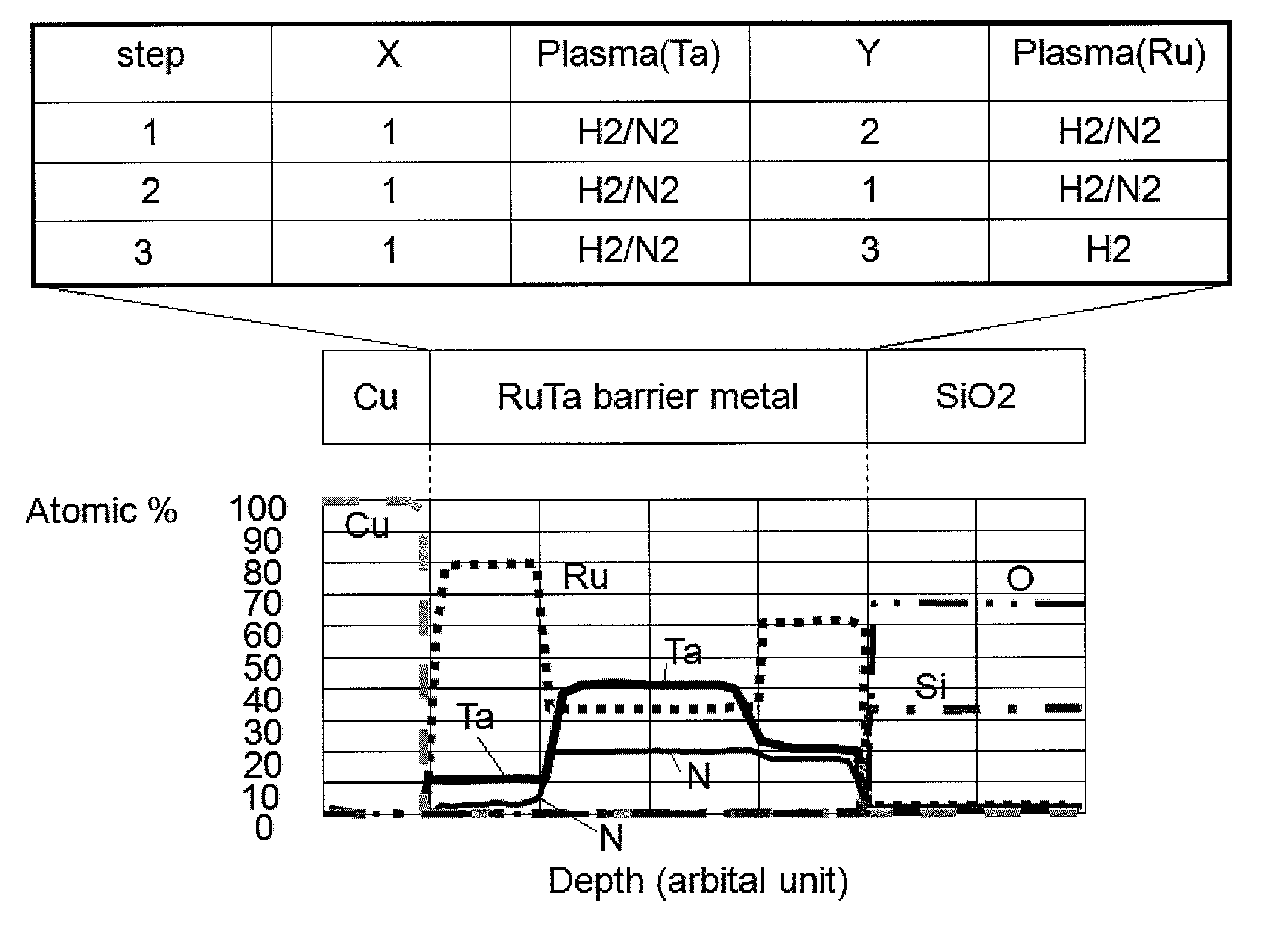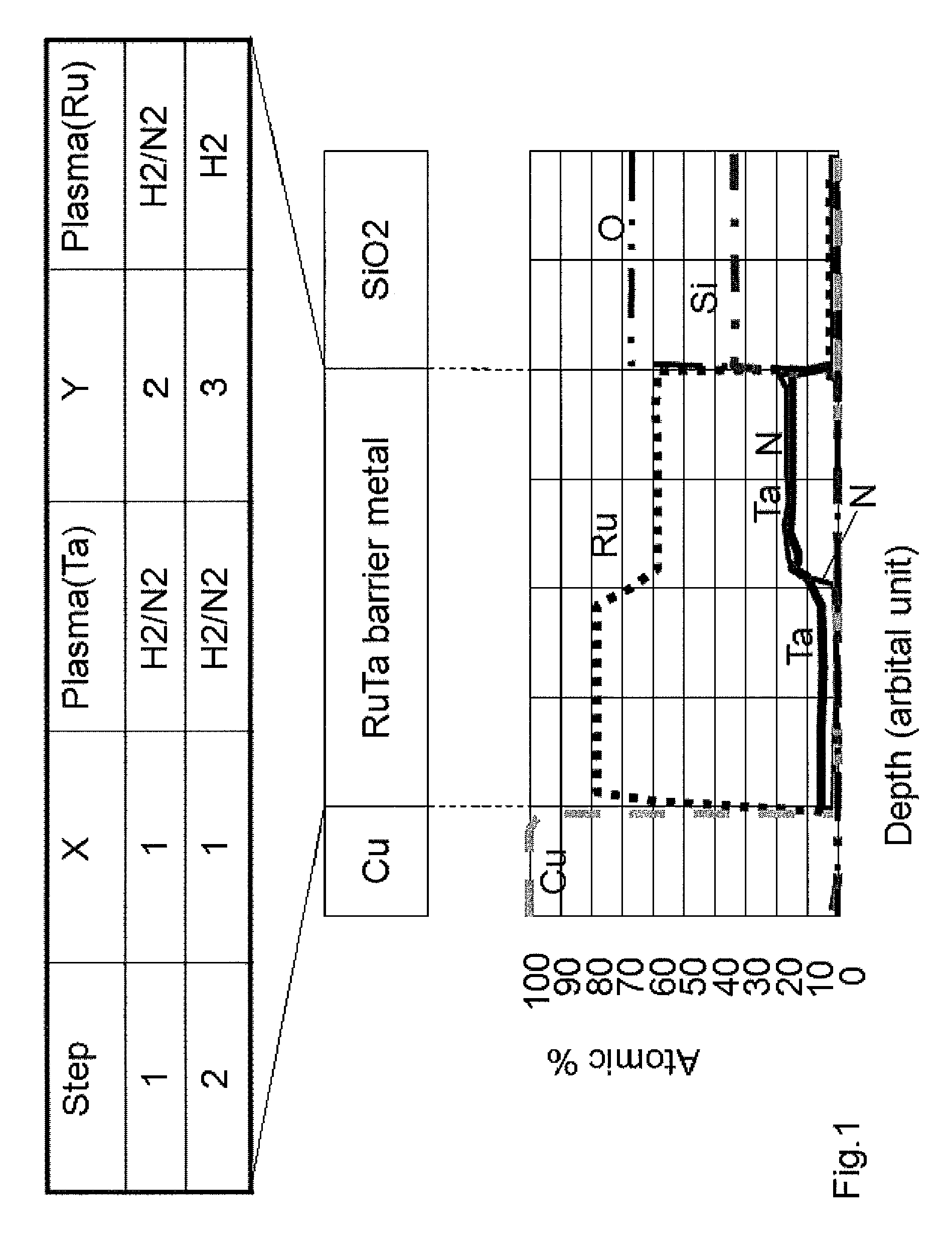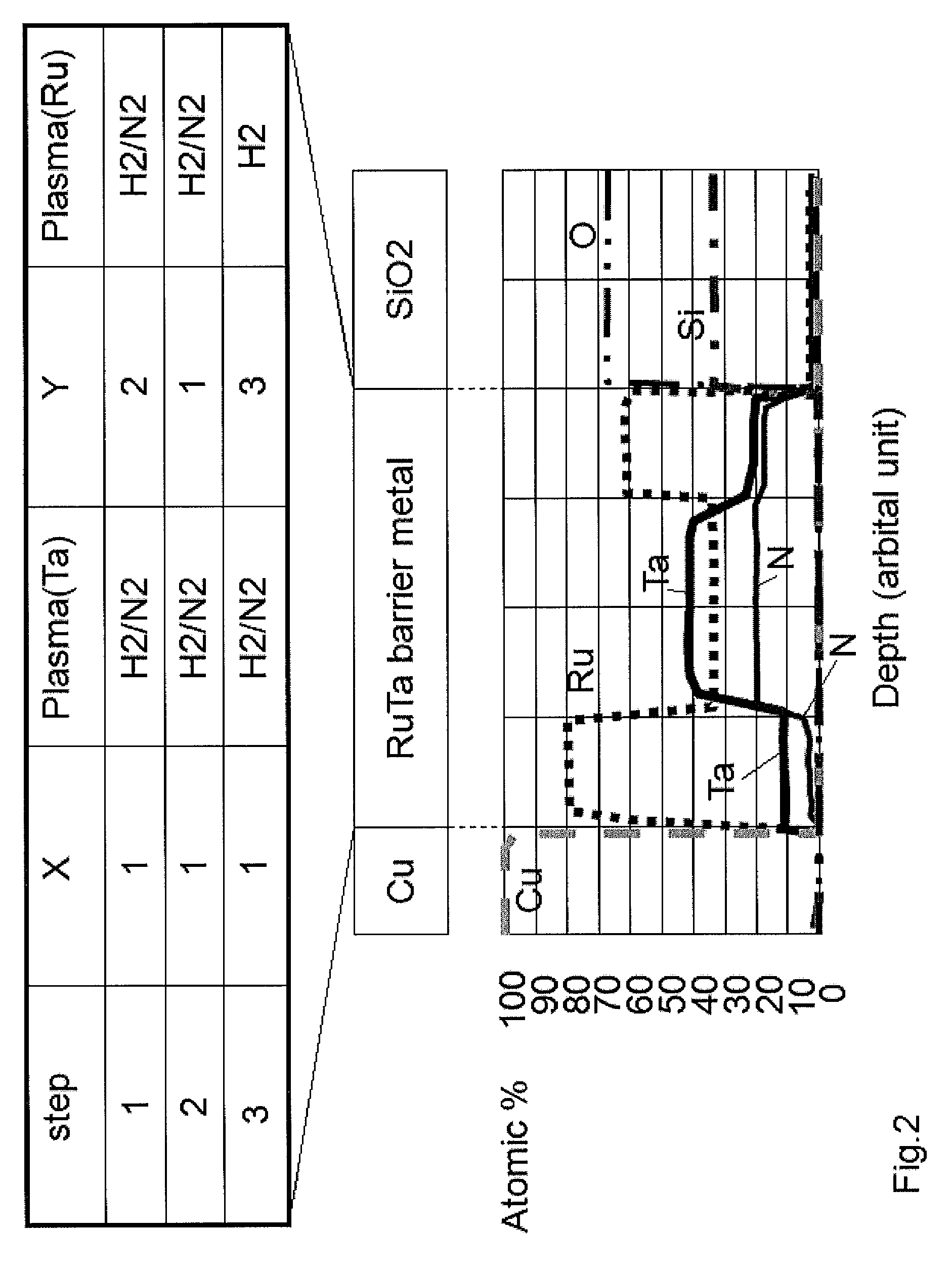Atomic composition controlled ruthenium alloy film formed by plasma-enhanced atomic layer deposition
a technology of atomic composition control and ruthenium alloy, which is applied in the direction of synthetic resin layered products, natural mineral layered products, and semiconductor/solid-state device details, etc., can solve the problems of loss of reliability of wiring, high film resistivity, via resistance, etc., and achieves the effect of increasing flow rate ratio, reducing density, and increasing resistan
- Summary
- Abstract
- Description
- Claims
- Application Information
AI Technical Summary
Benefits of technology
Problems solved by technology
Method used
Image
Examples
example 1
[0146]A specific example where the process in FIG. 1 is implemented using the apparatus shown in FIG. 4 based on the process sequences shown in FIGS. 5 and 6 is explained.
[0147]A Cu wiring is formed according to the process shown in FIG. 7 in a Cu wiring forming process based on dual damascene structure. Silicon substrates having a device that has been processed up to the state in FIG. 7(a) are treated using the apparatus shown in FIG. 10. A silicon substrate is set in a cassette loader 501, and a transfer robot 502 is used to transfer the substrate into a load lock chamber 503, after which the substrate is transferred by a vacuum robot 504 from the load lock chamber 503 into a reaction chamber for plasma atomic layer deposition 505. The next substrate is transferred to a reaction chamber 507, and the subsequent substrate is transferred to a reaction chamber 508, to allow the process to be implemented in a similar manner. The substrate transferred to the reaction chamber 505 is plac...
example 2
[0153]A specific example where the process in FIG. 2 is implemented using the apparatus shown in FIG. 4 based on the process sequences shown in FIGS. 5 and 6 is explained.
[0154]A Cu wiring is formed according to the process shown in FIG. 8 in a Cu wiring forming process based on dual damascene structure. Silicon substrates having a device that has been processed up to the state in FIG. 8(a) are treated using the apparatus shown in FIG. 10. A silicon substrate is set in a cassette loader 501, and a transfer robot 502 is used to transfer the substrate into a load lock chamber 503, after which the substrate is transferred by a vacuum robot 504 from the load lock chamber 503 into a reaction chamber for plasma atomic layer deposition 505. The next substrate is transferred to a reaction chamber 507, and the subsequent substrate is transferred to a reaction chamber 508, to allow the process to be implemented in a similar manner. The substrate transferred to the reaction chamber 505 is plac...
example 3
[0157]A specific example where the process in FIG. 1 is implemented using the apparatus shown in FIG. 4 based on the process sequences shown in FIGS. 5 and 6 is explained.
[0158]A Cu wiring is formed according to the process shown in FIG. 9 in a Cu wiring forming process based on dual damascene structure. Silicon substrates having a device that has been processed up to the state in FIG. 9(a) are treated using the apparatus shown in FIG. 10. A silicon substrate is set in a cassette loader 501, and a transfer robot 502 is used to transfer the substrate into a load lock chamber 503, after which the substrate is transferred by a vacuum robot 504 from the load lock chamber 503 into a reaction chamber for plasma atomic layer deposition 505. The next substrate is transferred to a reaction chamber 507, and the subsequent substrate is transferred to a reaction chamber 508, to allow the process to be implemented in a similar manner. The substrate transferred to the reaction chamber 505 is plac...
PUM
| Property | Measurement | Unit |
|---|---|---|
| thickness | aaaaa | aaaaa |
| thickness | aaaaa | aaaaa |
| total thickness | aaaaa | aaaaa |
Abstract
Description
Claims
Application Information
 Login to View More
Login to View More - R&D
- Intellectual Property
- Life Sciences
- Materials
- Tech Scout
- Unparalleled Data Quality
- Higher Quality Content
- 60% Fewer Hallucinations
Browse by: Latest US Patents, China's latest patents, Technical Efficacy Thesaurus, Application Domain, Technology Topic, Popular Technical Reports.
© 2025 PatSnap. All rights reserved.Legal|Privacy policy|Modern Slavery Act Transparency Statement|Sitemap|About US| Contact US: help@patsnap.com



